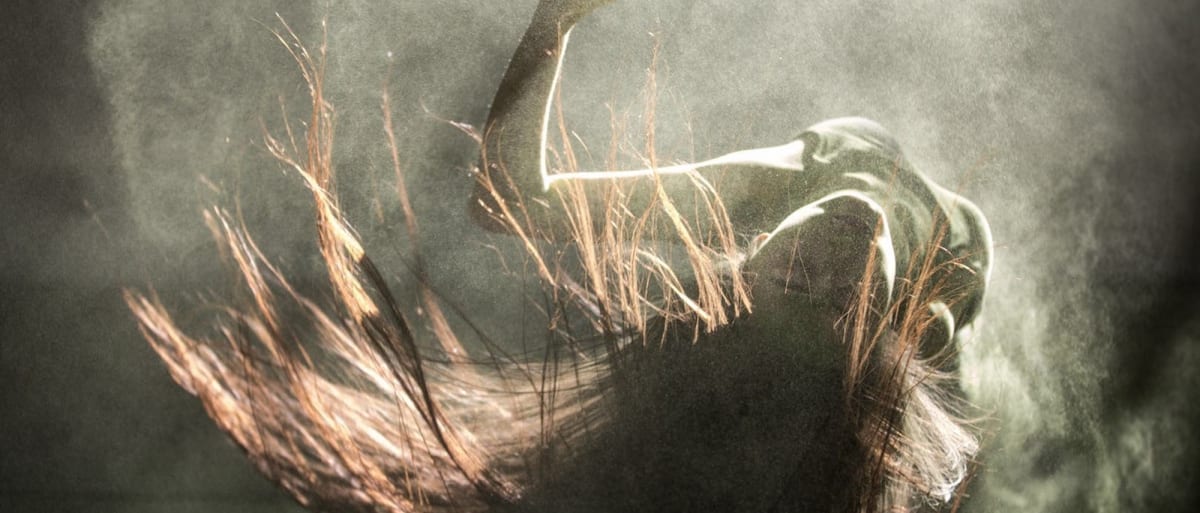I remember studying Nijinsky’s The Rite of Spring for my A Level Dance many years ago, and finding it both terrifying and hypnotic, the drama of Stravinsky’s score enabling a type of dance I had not before experienced. Yang Liping’s production elevates this famous narrative to a new style: and what a wonderful success. The entire performance is quivering with energy. From the moment you enter the auditorium, with smoke hovering above the elaborate headdresses and painted eyes of women seated around a sea of Chinese character bricks, to the final images of the sacrificial girl stripped of her worldly extravagances, and floating in a golden bowl, this is a breath-taking performance.
Visually striking, Tim Yip’s design direction is heavy with symbolism. It is not my place to invest meaning in each detail, and I expect the point is that this blend of mesmerizing colour, Buddhist mantras and symbols, and changing hair and headdresses, shift in meaning for each member of the audience. The vast shaggy shaman with its menacing gaze reminiscent of a Chinese dragon, lets his long hair drape over the bodies of the women, selecting them for sacrifice, or perhaps to satisfy his appetite. So much of the drama of this production comes from this tension between sacrifice as a brutal and oppressive ritual and sacrifice as a voluntary offering to a cyclical natural world. The performers are nearly entirely female, and they act as a powerful force: they move together as one and seem, at times, to have become part of the natural world to which they are offering themselves as sacrifice. Yang Liping’s signature peacock dance moves return as a motif and the use of long luminescent green fingers provide a haunting portrayal of the women becoming part of the landscape.
There are just two men in the performance. One is a Tibetan monk, ever-present on the stage, solemnly shifting the Chinese character bricks in a back-breaking leather sack. The other presents a contrasting power and energy: he is beast, man, death, tyrant, and victim. Performed by Da Zhu, this is a tremendous role, the choreography exposing the beauty and power of his movements.
A celebration of Spring or a dark and troubling female sacrifice? Stravinsky and Nijinsky’s work has always struck me as uncomfortable in its attempt to combine religious rites with manipulation of women’s bodies. Yang Liping’s claim that her female sacrificial protagonist is willingly ‘volunteering her body for sacrifices as her earthbound duty to her community,’ seemed highly questionable as I read the programme before the performance began. By the end, I still had my doubts, but it is impossible not to be drawn by the glorious celebration of the female body and its potential for life, passion, a deep-rooted connection with nature, and, I think most significantly, an unashamed sexuality.
Rite of Spring is an explosive, beautiful, and highly creative work and the shifting meanings and symbolism provide a glorious tension. The dancers are mesmerising – it really is a celebration of dance, nature, life, and the wonder of women’s bodies.

